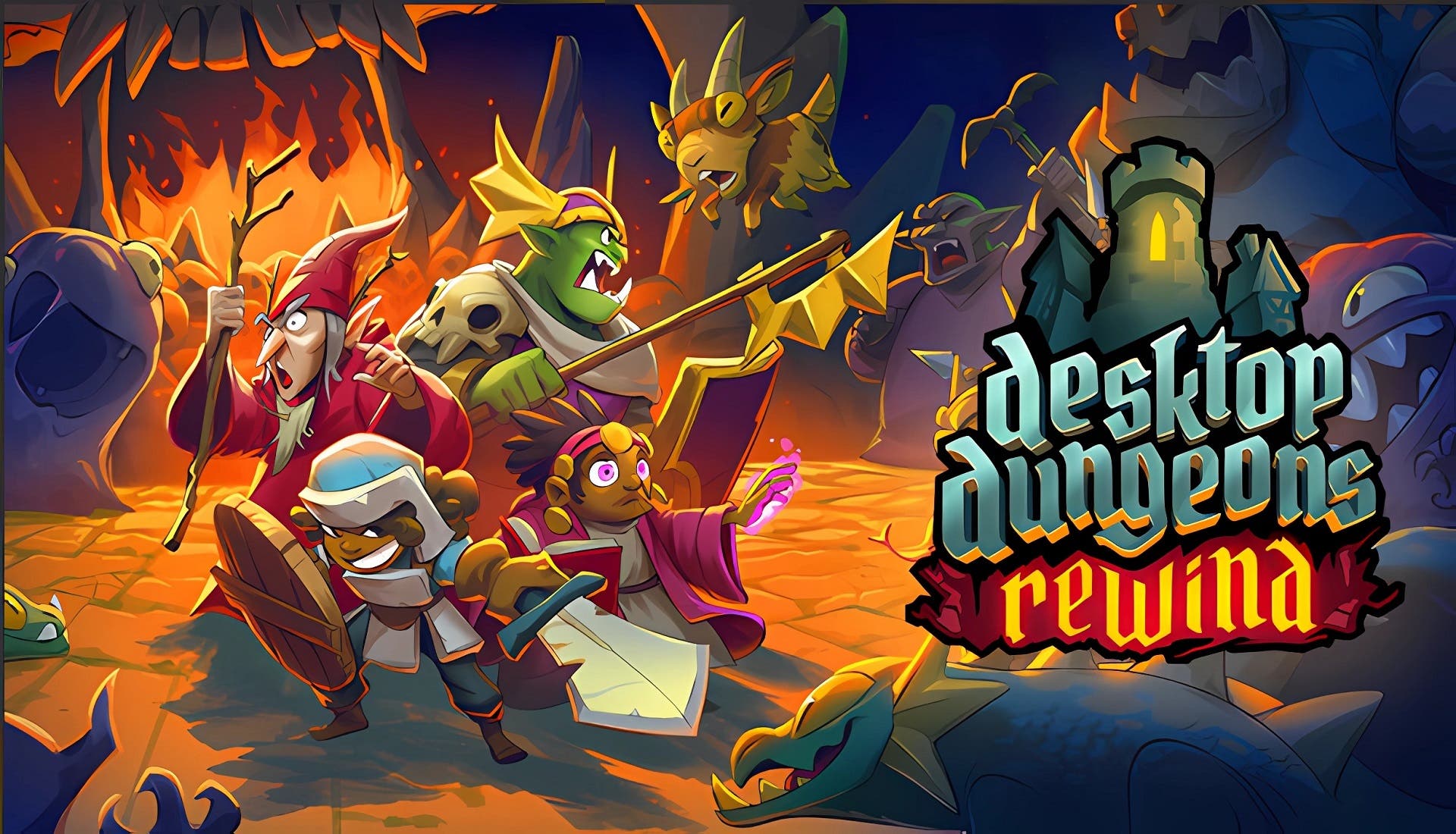If you haven’t played the early 2010s original from QCF Design, a real treat awaits you in Desktop Dungeons: Rewind . It’s the same game, with all-new artwork, some new twists, and still has the rock-solid gameplay that’s made it so beloved over the years. It’s a game I’ve had perpetually installed since it came to Steam, and I’ve been continually going back to all this time. Returning players can link their existing desktopdungeons.net account to utilizing their kingdoms and saves from day one, or start fresh. Desktop Dungeons: Rewind is a roguelike puzzler disguised as a tactical dungeon crawler with a dash of humor, for what is nearly unlimited adventures for decades to come.
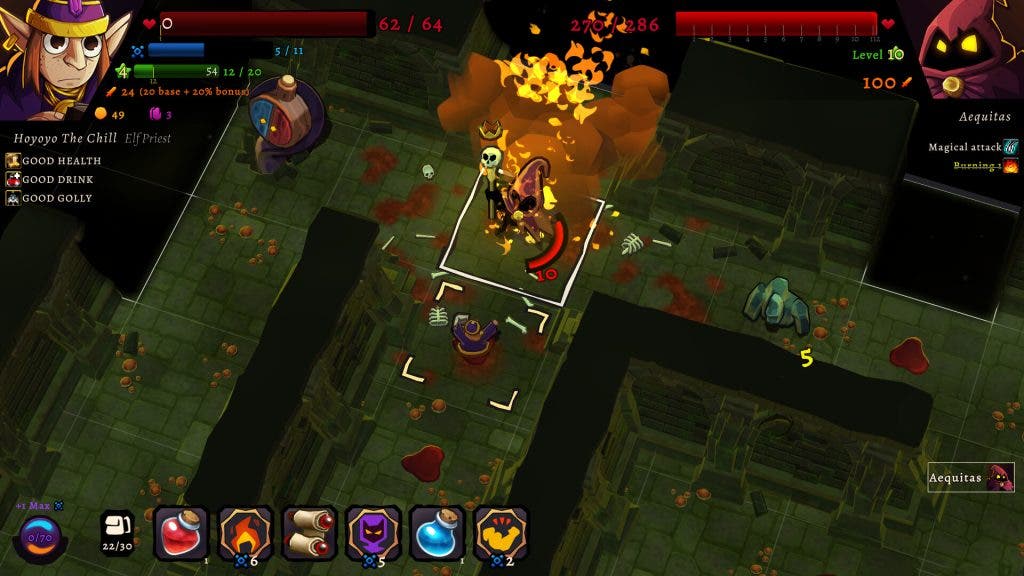
Editor’s Note: Desktop Dungeons: Rewind can be obtained completely FREE if you own the original game prior to its release.
The developers describe the game as a “bite-sized, tactical dungeon crawler”, and while that’s true, it’s so much more than that. This is a remaster of their game that came to Steam in 2013, celebrating this ten-year anniversary with this is a fitting way to do that. The original game still exists for those curious, and while I favor the artwork there, Rewind is an improvement in every way. It wouldn’t be in the name if you couldn’t do it, but you get a second chance at life thanks to the new Rewind Insurance system. Upon your first death, you can go back to the start with the exact same dungeon layout to either make the same mistakes, or entirely new ones! If you die a second time after the rewind, then you’re dead for good. The map is fully revealed upon death, as it gives a good understanding of things you missed, or how close you were to getting to the boss. The mechanic doesn’t do anything to make the game any less difficult, it just gives you a fighting chance.
Desktop Dungeons: Rewind asks you to pick a race of character (called “kin”), then select a class, and then you’re delving into a randomized dungeon. The goal is simple: there’s a boss somewhere on the map who is a level ten, and as a mealy level one, it’s your job to match that level or closest to it to defeat him without dying first. Once you’ve dropped in, you’ll be at camp, deciding where to go next as the whole map is completely obfuscated by a fog of war. You’ll navigate tile to tile, revealing new enemies and pickups. Pickups are sometimes buffs to attack damage, spells like casting fire or destroying walls, and Monsters are cleared defined by their level, so there’s no surprises in combat. You’ll never get attacked when you stumble upon a monster, they wait patiently for you to strike first. This is how you’re reminded this is a puzzle game first and foremost. Once you initiate combat, you’ll be presented with all the information needed to either win or flee from this fight. Each hit is calculated by the game to show you exactly when you’ll die if you don’t heal or use a magic spell to do additional damage. You’ll have to plan your moves carefully, because as you reveal tiles, you’ll have your health replenished. If you don’t think several steps ahead, you’ll likely put yourself in an unwinnable situation and be forced to restart or die trying.
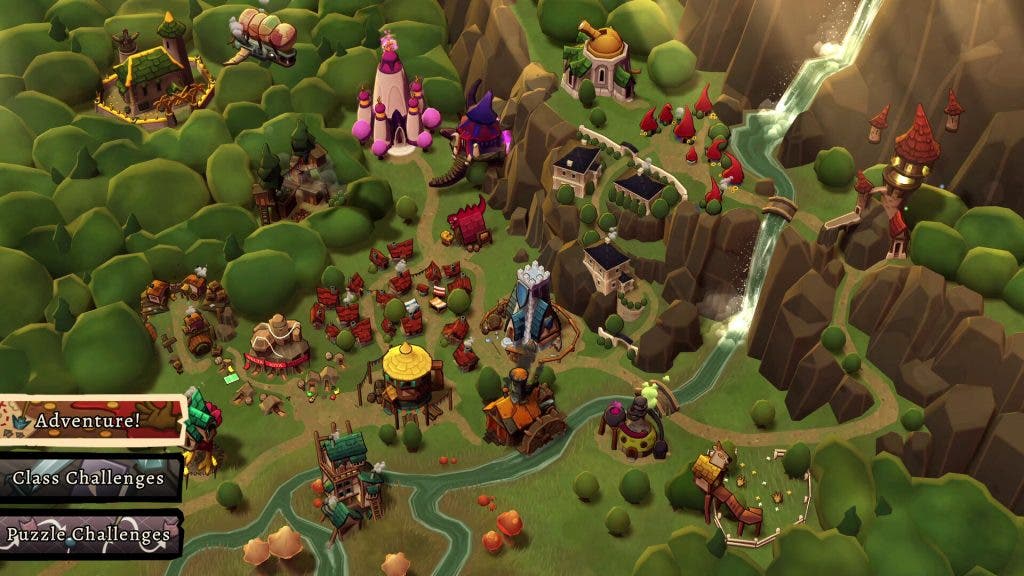
After some prologue stuff, the game has now taught you the basics, but it’s game that never stops teaching. It’s here when you’re off for a real adventure, as then the game asks you to pick a location or quest before your usual kin and class picks. The adventure mode is the bulk of the game, and how you’ll work towards unlocking all of the different kin and classes the game has on offer. There’s a healthy amount of quests to keep your interest, and you’ll likely be bested many, many times before you succeed. Some quests require that locations be cleared by multiple classes before the quest is marked complete. This can and will likely be a difficult game, and it has no chill when it comes to punishing you. That said, win or lose, you’ll be amassing gold from each of your runs. This gold can then be spent on upgrading your kingdom, making it bigger and better to help defeat the bosses that threaten it.
Initially the game offers some basic kin like humans and elves at first, but there are seven in total to unlock, with orcs and rats among them. In addition, there are a possible 21 classes to unlock. Some of them can be considered variants of the same family: fighter and berserkers or thieves and assassins or even wizards and sorcerers There’s enough different between them that create variability. My personal favorite is the vampire, which has life steal that doesn’t make things easy as it seems, but is a great way of generating passive returning health. There’s so many ways to mix ‘n’ match different types of characters, with some working better than others, but there’s no shortage of options here. Desktop Dungeons: Rewind is the kind of game you play for hours at a time, or when you’ve only got a spare ten minutes, either way you’ll get something good out of it.
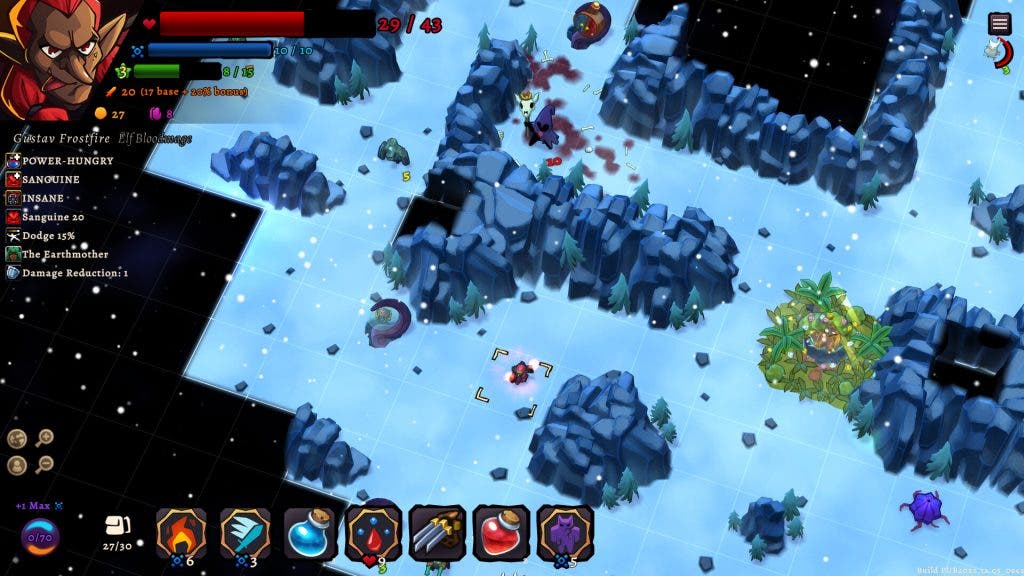
Desktop Dungeons: Rewind has several modes of play to keep you busy, and it won’t be long into the game where you unlock Class Challenges. This is a mode of procedurally generated levels that will test your mettle by utilizing a class to its fullest against difficult enemies, and you’ll have to understand the class fully in order to come out victorious. Puzzle Challenges is another mode that works similarly, but really doubles down on the puzzle aspect; as the name would imply, that it’s less about the class, and more about being meticulous in your planning.
Daily Challenges are something most of us are familiar with for roguelikes and even other genres. A randomly generated dungeon is shared among everyone who participates. Your task is the same as an adventure, to kill the boss and claim their trinket. However, this is a highly-skilled dungeon that will really impress forethought onto you. No matter if you live or die, you’ll be placed on a leaderboard against friends and strangers for comparison. If you die during this daily run, you do have rewind insurance you can cash-in. After that, or if you choose not to use it, that’s it – you basically get one-shot at the daily run and try with the new one the following day. It’s a brutal, humbling mode, but one I can’t stop trying each day it resets.
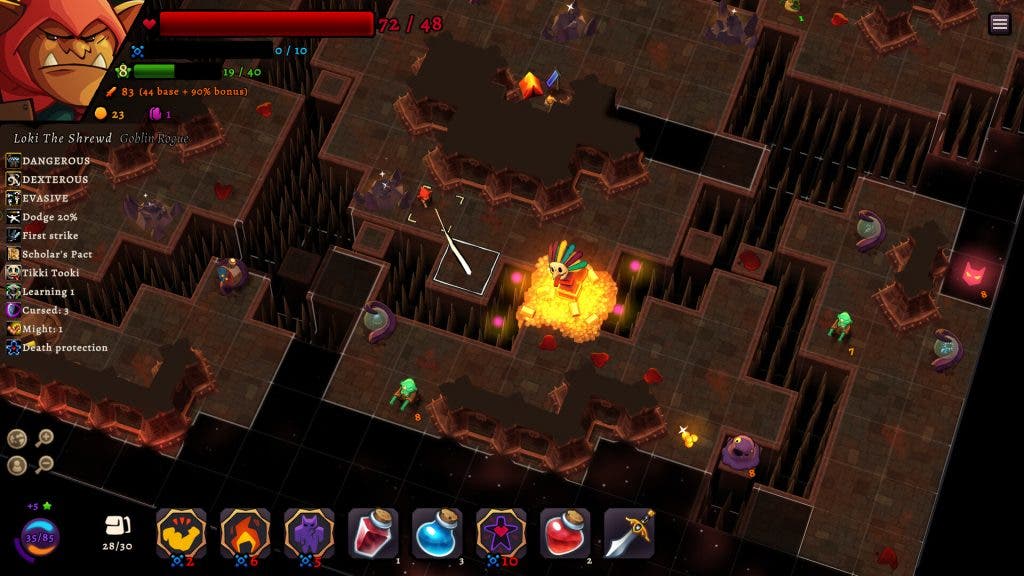
While I still prefer the original Desktop Dungeons mainly for nostalgia, Rewind this is a refreshing and modernized reintroduction of the game will have a new generation falling in love like I did over ten years ago. Even if you haven’t played it before, I think the price of admission is well worth it for a game that offers so much variety and longevity, being infinitely replayable in the truest sense. QCF Design offers a game that lets you peel back the layers like an onion, only to find that it’s wrapped around another onion. And once you peel back those layers, there’s yet one more onion inside that’s offers more depth and surprises. Desktop Dungeons: Rewind is a lighthearted and challenging procedurally generated puzzle meets dungeon crawler roguelike, and is the coolest thing you’ll play all year.
A Steam code was provided in advance by the publisher for review purposes
